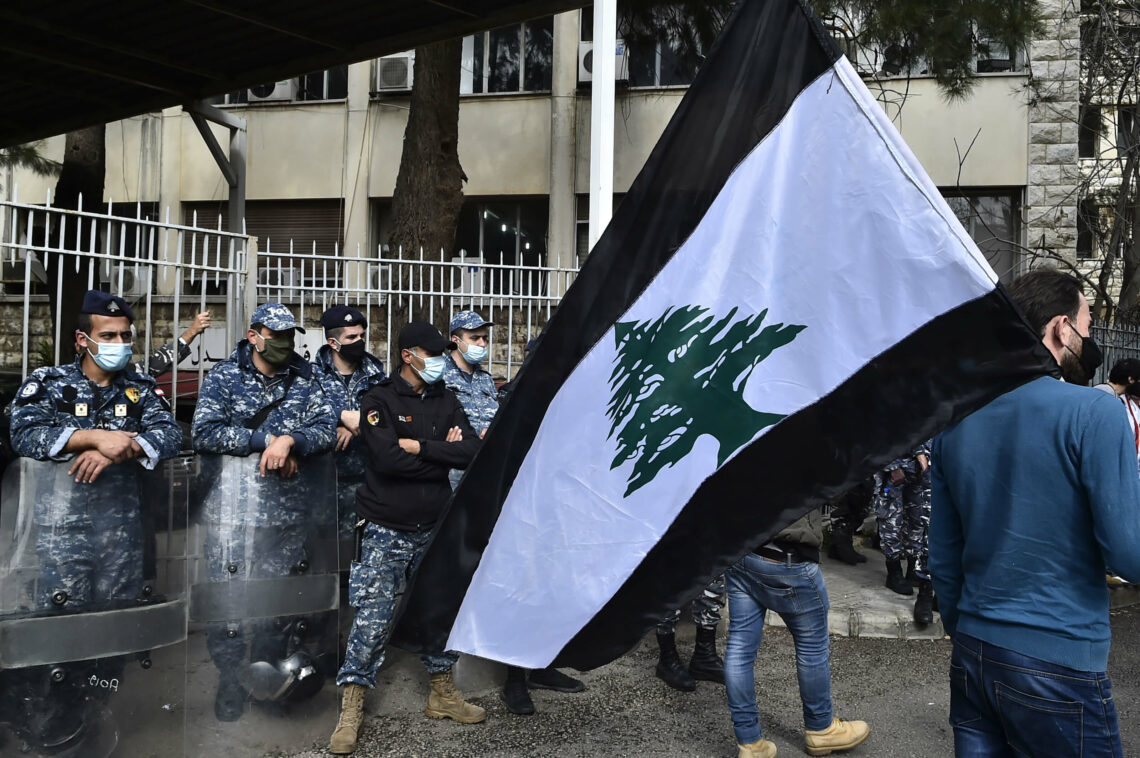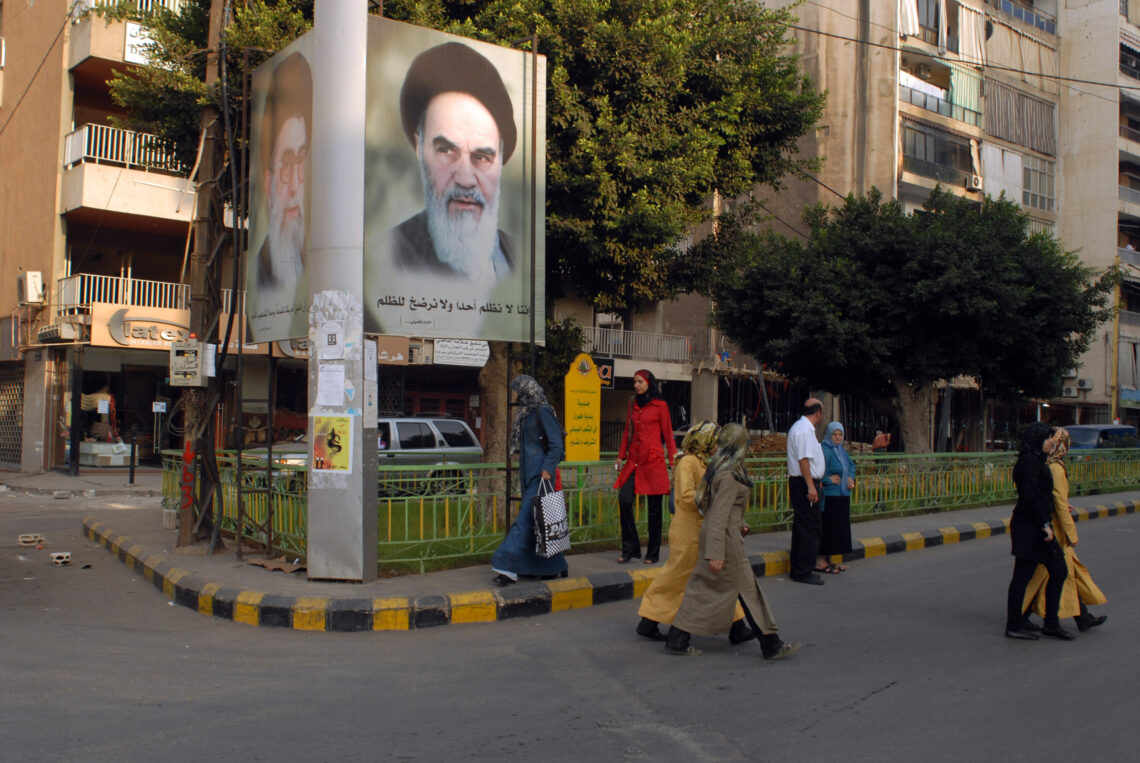Hezbollah and Lebanon’s slow death
Lebanon’s political scene is profoundly dysfunctional, preventing the implementation of necessary reforms. Since this state of affairs benefits the ruling Hezbollah, the Iranian-backed party is determined to fight for the status quo.

In a nutshell
- Hezbollah thoroughly controls Lebanon
- The party is unpopular but deeply entrenched
- Economic hardship will likely worsen
In September 2021, 80 trucks carrying one million gallons of Iranian oil entered Lebanon amid a severe fuel crisis. There were no border checks and no customs duty was levied. The shipments were orchestrated by the pro-Iranian Hezbollah movement. Lebanon’s Prime Minister Najib Mikati, although a Hezbollah political ally, told CNN: “The violation of Lebanon’s sovereignty makes me sad.”
If the international community still had doubts, these recent events have clearly shown the extent of Hezbollah’s control over Lebanon. The Iranian oil shipments represent an impressive public relations success. In practical terms they are hollow: Lebanon needs more than 6.5 million gallons of oil per day. Iran sent much less than one day’s worth of consumption. Still, from Hezbollah’s viewpoint, the move was a victory. It highlighted Iranian generosity and flouted the United States embargo. And, since they sold the fuel at the inflated market price, the project also proved highly profitable.
Lebanon’s fuel problem remained unchanged. On October 10, the two main national electricity production units were shut down. By October 18, the average Lebanese could get only two hours of electricity a day. Only very expensive private electrical services remained available. The country went dark. Even though a new agreement, supported by the U.S., has Egypt sending natural gas to Lebanon via Jordan and Syria, Hezbollah has promised to continue this endeavor.
Sectarian system
At the heart of Lebanon’s dysfunction is the sectarian political system. Political authority has traditionally belonged to the sects’ bosses. Public servants are usually appointed according to religious affiliation. The warlords of the 1975-1990 civil war still hold the most powerful political positions and appear deeply entrenched. Oversight hardly exists and corruption has flourished. While Hezbollah did not create this system, since 1989 it has been its main pillar, and therefore its main beneficiary and strongest protector.
Hezbollah is a paradoxical presence in Lebanon’s political life.
The dominant coalition in the Lebanese parliament is the Hezbollah-led March 8 Alliance that includes the Shia movement Amal and President Michel Aoun’s Christian party, among others. Their rival is the March 14 Alliance, led by Saad Hariri, which includes most Sunni and Druze groups and part of the Christian camp.
Hezbollah has managed to take root in Lebanese politics because of internal divisions within the Christian and Sunni camps, and also thanks to the group’s ability to reward partners and intimidate rivals. Iran provides the organization with substantial financial and military support. The movement’s power base is the Shia Lebanese, which are assessed at a sizeable 30 percent of the population.
Taif and Doha
Two Arab and American-backed deals sealed Hezbollah’s political supremacy in Lebanon. The 1989 Taif Agreement required the disarmament of all militias save for Hezbollah, which was allowed to fight Israel in the south. Because Hezbollah is committed to the annihilation of Israel, this status has given the organization an open-ended license to kill, involving Lebanon in wars that most of the population does not support.
The other deal was the 2008 Doha Agreement. On May 7, fighting erupted after the government moved to shut down Hezbollah’s independent telecommunications network, which bypassed the state system. The government also decided to remove the head of security at Beirut Airport, who was providing Hezbollah with information on arrivals. (Back then, the organization was part of the opposition and had no executive power to prevent these policies from being implemented.) Violence escalated the next morning in Beirut, after a televised speech by Hezbollah leader Hassan Nasrallah. He called the measures “a declaration of war” – and war there was, except that he was the one declaring it.
The national army and police were paralyzed. The fighting between the pro-government militias of Saad Hariri’s Future Movement and the Hezbollah-led opposition spread quickly to other parts of Lebanon. Hezbollah was winning, but the Arab League and the West were reluctant to send troops to support the elected government.
On May 21, 2008, the Arab League brokered an agreement in Doha. It created a monster under the guise of a national unity government, with veto power for the opposition. The agreement also enforced a redistricting law of the electoral zones that favored Hezbollah. The question of the group’s “resistance” weapons was postponed. Hani Hammoud, a senior advisor to Saad Hariri, referred to the events as a “one-sided civil war” resulting in “Iran taking over the country.”
After the 2009 elections and until the 2018 elections, there was an equilibrium between the two coalitions. But the Taif and Doha agreements made Hezbollah the chief beneficiary of the new Lebanese system. Over time, they also created a separate economic system that, to some extent, shielded important segments of the Shia population from the woes of the state’s disintegration.

Socioeconomic abyss
In May 2018, Lebanese voters cast their ballots for the first time in nine years to elect 128 members of parliament. Though its mandate ended in 2013, the parliament had used a long political crisis to skirt the constitution and extend its term three times, in 2013, 2014 and 2017. This time, thanks to the pro-Hezbollah gerrymandering, the March 8 Alliance emerged victorious with 60 percent of seats.
In the new national unity cabinet, even though Hezbollah had only two ministers, their coalition still had a majority, with 18 out of 30 ministers. The March 14 Alliance won only 37 percent of the seats. When Mr. Hariri agreed to become prime minister, Hezbollah – now in control of the government – was delighted that its main enemy decided to play along.
Because it benefits from the status quo, Hezbollah holds on to the present power-sharing system that has pushed Lebanon into a socioeconomic abyss. The movement’s commitment to the existing arrangement was made clear during the 2019 “17 October Revolution,” when Beirut streets filled with anti-government and anti-corruption demonstrators, many of them young Shia. Even though Prime Minister Saad Hariri is their political opponent, Mr. Nasrallah and other Hezbollah officials fiercely attacked the protesters and defended the government. Nevertheless, to their chagrin, after 12 days of demonstrations, Prime Minister Hariri announced his resignation.
The state of the economy, as bad as it is now, will worsen.
A new prime minister was voted in, but the tragic port explosion in Beirut on August 4, 2020, forced him to resign. In October, Mr. Hariri agreed to try and put together a government of experts that would carry out extensive reforms, thus allowing the country to unlock the promised international aid. Hezbollah killed the attempt and in July 2021, Mr. Hariri stepped down again. On September 10, 2021, Najib Mikati, a Hezbollah ally, became prime minister. In the Mikati national unity cabinet, the Hezbollah-led March 8 Alliance now has 16 out of 24 ministers. The deeper the crisis, the stronger Hezbollah’s stranglehold on Lebanon becomes.
Scenarios
Hezbollah is a paradoxical presence in Lebanon’s political life. It has only 12 of the 128 parliamentary seats (with another 10 for the Shia party Amal). Yet, it controls most of the borders and smuggling routes, has a parallel communication network, runs a private army, dictates Lebanon’s foreign policy, and controls separate banking, supermarket, and fuel distribution systems.
The tighter their hold over Lebanon’s politics, security, and economy, the more unpopular the movement becomes. Since 1982, when the movement was created by Ayatollah Khomeini’s Iran, its clout has continuously been on the ascent. In 2000, its popularity reached its zenith, after it drove the Israeli army out of the country. By then they were widely seen as national liberators. Since it dragged Lebanon into the costly 2006 war and even more so since their coalition’s electoral victory of 2018, their popularity has been declining – at the same time that their power has increased by leaps and bounds.
On one hand, Hezbollah is making every media effort to convince the Lebanese population that, rather than a self-serving, parasitic actor, the group is an all-Lebanese patriotic force, dedicated to supporting the Lebanese poor. On the other hand, to maintain the support of its power base, the Shia population, the party is making great efforts to demonstrate that it is shielding them, and them alone, from the state’s economic disaster.
Hezbollah’s claim that they support the Shia minority does not hold up to scrutiny. It fully supports the families of the standing army of the militia, but for reservists, this assistance is far more modest, and for ordinary Shia, it is very limited. This is hurting their popularity even among their supporters. Also, having sent thousands of fighters to keep Syria’s Bashar al-Assad in power and taking up to $1 billion per year in support from Iran, Hezbollah can hardly hide that it is made up of Shia foreign agents, not Lebanese patriots.
No less importantly, by forcefully suppressing any anti-corruption protests and by resisting legal state inquiries, they are repeatedly demonstrating their fear of being exposed as a violent sectarian movement. This is particularly obvious given how they are obstructing the inquiries into Rafic Hariri’s assassination and the Beirut port explosion.
On March 27, 2022, Lebanon will elect a new parliament. Like Lebanon, Iraq, too, is a semi-democracy. Yet, the October 2021 elections there created, for the first time, a potential for change. The balance of power in Lebanon too can change, but only if Hezbollah’s rivals score clear victories in Christian zones, and in Shia areas where Hezbollah and Amal are relatively weak, such as Zahle and Baalbek. If the new parliament does not form a better government than the present one Lebanon’s political decline will continue. Hezbollah’s tremendous military edge makes a new civil war unlikely, but chaos is very probable. If the new government fails to introduce most of the reforms that the international community demands but receives aid anyway, then the funding will disappear into the pockets of the Lebanese political elite. The state of the economy, as bad as it is now, will worsen.







